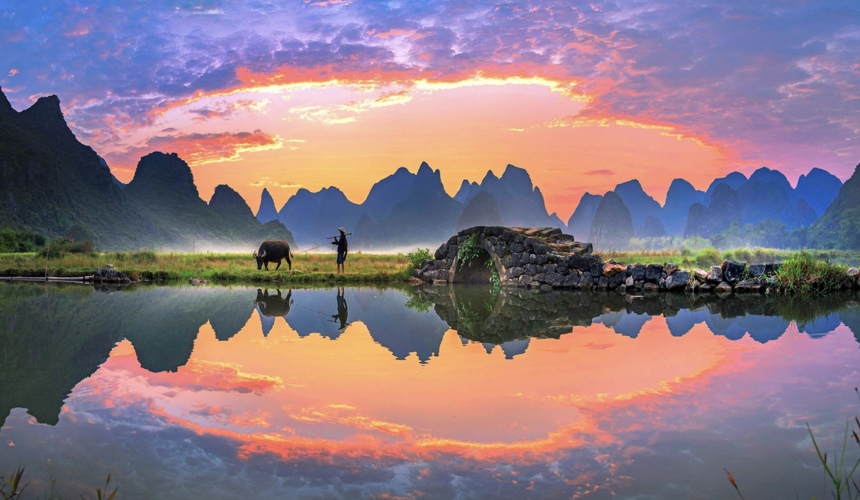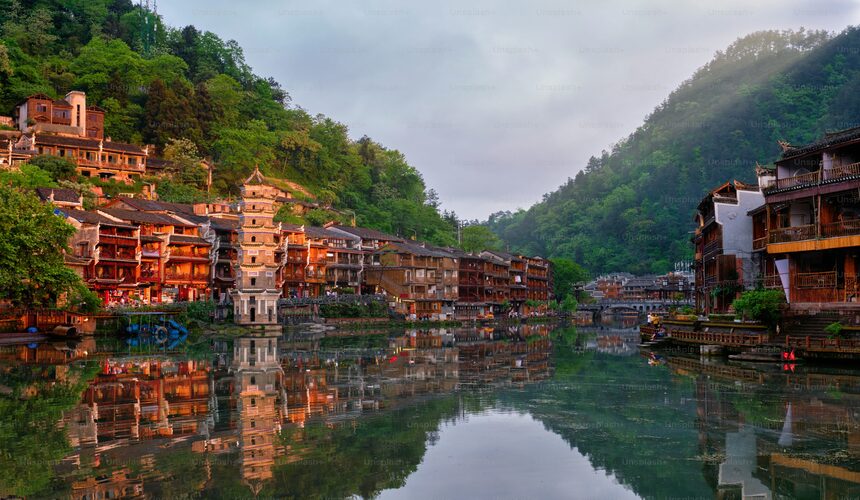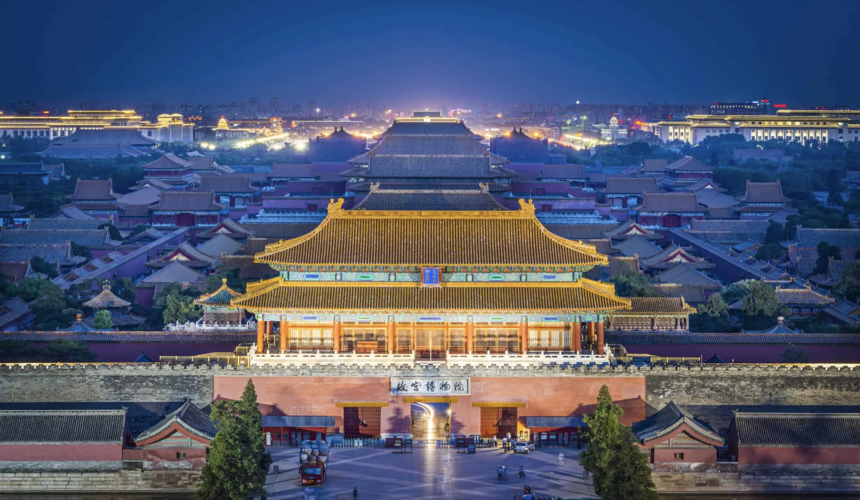
15 Off-the-Beaten-Path Places to Visit in China
When most people think of China, images of the Great Wall, the Forbidden City, and the skyline of Shanghai come to mind. But beyond these iconic landmarks lies a side of the country that few travelers ever see. Off-the-beaten-path China offers a treasure trove of untouched beauty, cultural richness, and unforgettable experiences without the crowds.
In this guide, we’ll take you deep into hidden places in China where time seems to stand still and where tradition shines. From serene mountain villages to surreal desert landscapes, these unexplored destinations in China are perfect for adventurous souls seeking alternative China travel experiences. If you’re tired of tourist traps and want to uncover secret travel spots in China that even many locals don’t know about, this list is for you.
1. Ruyi Peak Scenic Spot (Yangshuo County, Guangxi)
Tucked away in the lush karst landscapes of Yangshuo County. The Ruyi Peak Scenic Spot is a rising gem that offers one of the most surreal viewpoints in southern China. Accessible via a winding glass-bottom bridge suspended between peaks. This destination gives you panoramic views of fog-kissed limestone mountains, rice paddies, and winding rivers. Just like a scene straight out of a Chinese painting. It remains relatively off the beaten path in China, even as its visuals go viral on local social media.
- Best Time to Visit: Spring (March–May) and Autumn (September–November) for clear skies and mild temperatures. Avoid major Chinese holidays due to domestic tourism.
- Famous For: Glass bridge suspended over dramatic karst cliffs. Panoramic sunrise and sunset views.
- Travel Tips: Arrive early in the morning for fewer crowds and better light for photos. Wear sturdy shoes, especially if hiking off the paved paths. Ruyi Peak is best reached via private car from Yangshuo or Guilin.
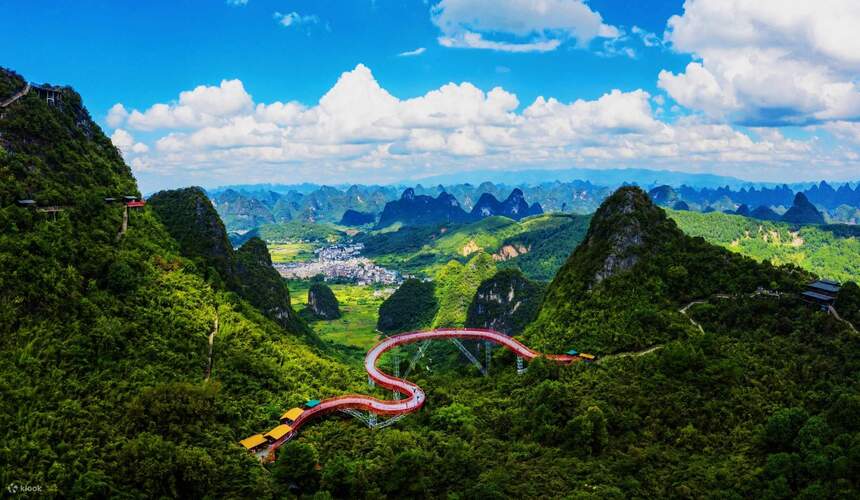
2. Furong Ancient Town (Hunan Province)
Furong Ancient Town is a stunning cliffside village perched over a roaring waterfall, blending traditional Tujia minority culture with natural beauty. Though it was once the set of a famous Chinese film, it has remained largely unknown to foreign tourists. This makes it a true hidden place in China. The cobbled streets, stilted houses, and dramatic riverside views offer a timeless experience.
- Best Time to Visit: Spring and Autumn for comfortable weather and fewer tourists. In summer, you can see the waterfall at its most powerful.
- Famous For: Ancient stilt houses overlooking a large waterfall. Rich Tujia ethnic culture and local crafts. Nighttime lantern-lit river walks and performances.
- Travel Tips: Combine Furong with a trip to Zhangjiajie National Park (about 2 hours away). Try local specialties like sour fish soup or Tujia rice wine. Bring cash, some shops still don’t accept foreign cards or WeChat Pay
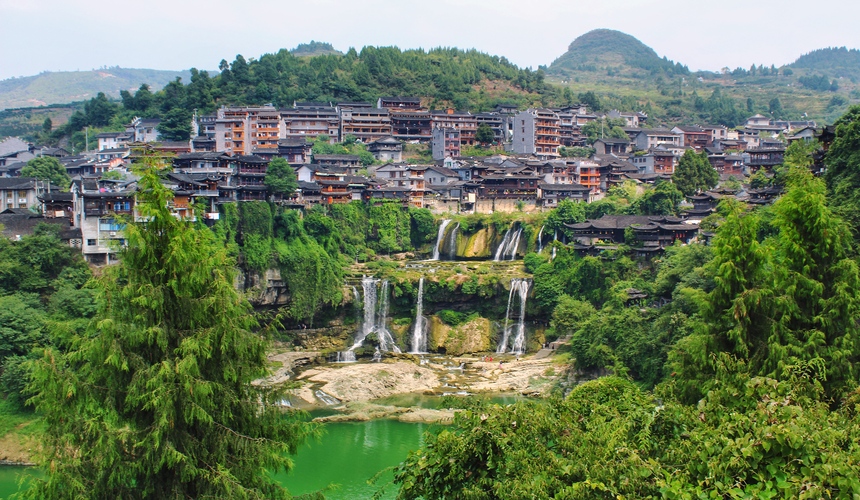
3. Wanfenglin Scenic Area (Guizhou Province)
You can find this jaw-dropping sea of karst hills that stretches as far as the eye can see, without the crowds of more famous destinations like Guilin or Zhangjiajie. Located near the city of Xingyi in Guizhou Province. This spot represents the raw and unexplored destinations in China that still fly under the radar for most international tourists.
- Best Time to Visit: April to October for green fields and rice terraces in full bloom. Visit in early summer for golden rapeseed flower fields.
- Famous For: Massive karst mountain fields (best viewed from above). Scenic bike rides through quiet farmland.
- Travel Tips: Rent a bike or an electric scooter to explore the countryside roads at your own pace. Avoid the midday sun, mornings and evenings are cooler and more photogenic
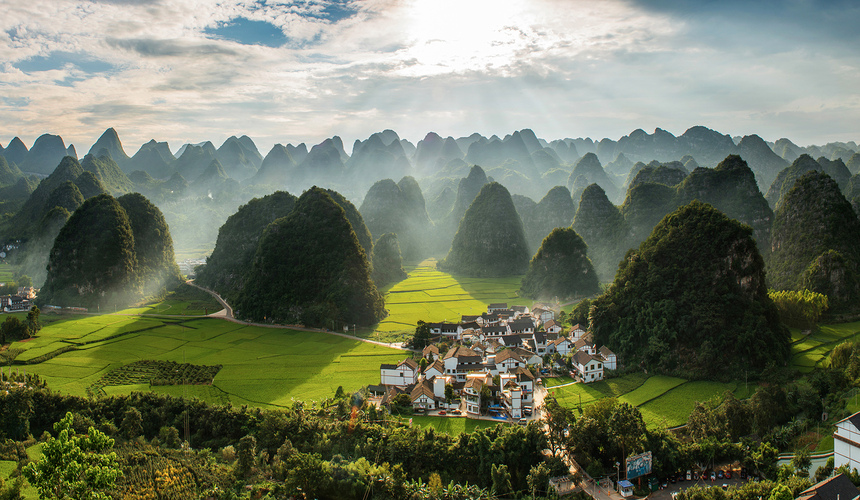
4. Puzhehei Scenic Resort (Yunnan Province)
Puzhehei Scenic Resort is a fairytale-like region of emerald lakes, karst hills, lotus fields, and charming Yi minority villages. Unlike the tourist-heavy Guilin or Yangshuo, Puzhehei remains relatively untouched by mass tourism. Make it one of the most peaceful secret travel spots in China.
- Best Time to Visit: June to August for the spectacular lotus blossom season.
- Famous For: Scenic boat rides through karst peaks and lotus-filled lakes. Colorful Yi minority festivals. Photography-worthy sunsets over the wetlands.
- Travel Tips: Rent a small boat for a peaceful paddle through the lotus fields. Try local Yi cuisine, especially grilled fish and sticky rice.
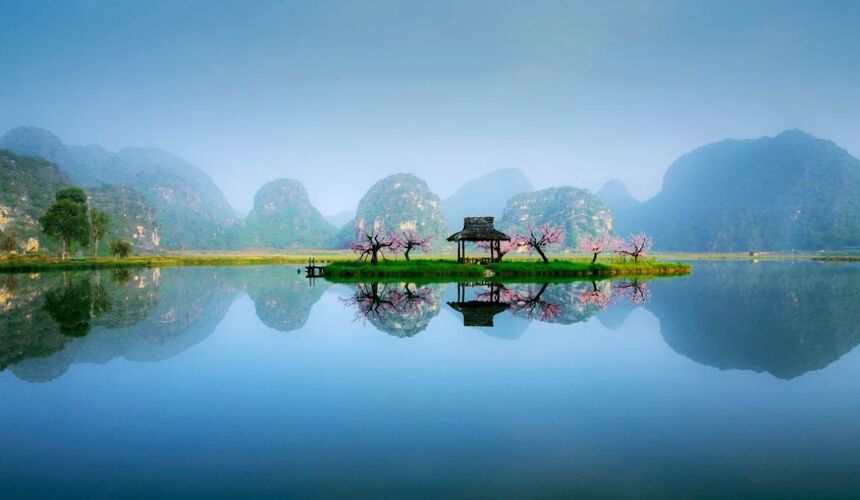
5. Mount Qingcheng (Sichuan Province)
Mount Qingcheng is one of the cradles of Taoism in China. It is known for its misty peaks, quiet forests, and centuries-old temples tucked into the mountainside. While nearby Mount Emei attracts more visitors, Qingcheng offers a quieter and more spiritual experience. A great choice for those seeking an alternative China travel.
- Best Time to Visit: Spring (March–May) and Autumn (September–November) for clear skies and fewer crowds. Summer is green and lush but can be humid.
- Famous For: Taoist temples and spiritual hiking trails. Bamboo forests and moss-covered pathways. Cable car and boat combo for scenic exploration.
- Travel Tips: Choose Front Mountain for spiritual sites; Back Mountain for more rugged hiking. Combine with a visit to the Dujiangyan Irrigation System (a UNESCO site nearby).
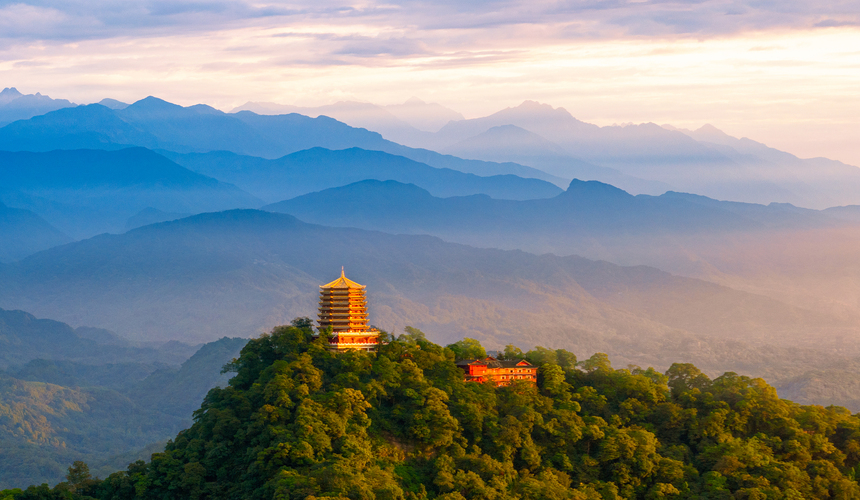
6. Kashgar’s Old Town (Xinjiang Uygur Autonomous Region)
In the far western edge of China lies Kashgar, a legendary Silk Road city that feels like stepping into Central Asia. It’s Old Town full of winding alleys, mud-brick homes, and vibrant bazaars. It is one of the most immersive hidden places in China. A living museum of Uyghur culture, Islamic architecture, and nomadic history.
- Best Time to Visit: Spring (April–June) and Autumn (September–October) offer the most comfortable temperatures.
- Famous For: The bustling Sunday Bazaar, one of the largest in Central Asia. Rich Uygur cuisine and cultural traditions
- Travel Tips: Respect local customs therefore conservative dress is appreciated in this majority-Muslim area. Photography is welcome, but always ask permission before taking portraits.
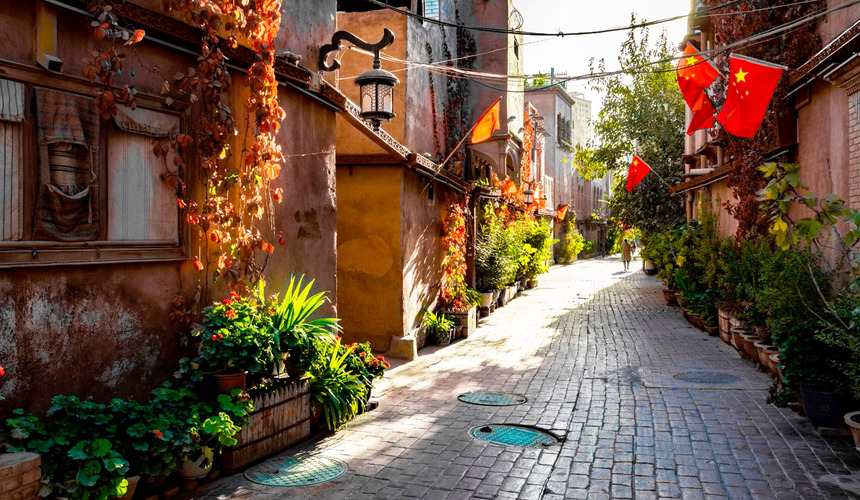
7. Wulong Karst Geological Park (Chongqing Municipality)
Wulong Karst Geological Park is a UNESCO World Heritage site known for its dramatic limestone formations. You can find natural stone bridges, deep sinkholes, and mysterious caves in this attraction. Though it has gained some fame from movies like Transformers: Age of Extinction, it still remains a relatively unexplored destination in China.
- Best Time to Visit: April to October for the best weather and lush green surroundings
- Famous For: Three Natural Bridges is a towering limestone arches in a lush gorge. Vast underground caves like Furong Cave.
- Travel Tips: Wulong is best accessed from Chongqing (2–3 hours by car or train). Wear comfortable shoes because the terrain involves a lot of walking and stairs. The park is large therefore it is better to plan at least 2 days if you want to see everything.
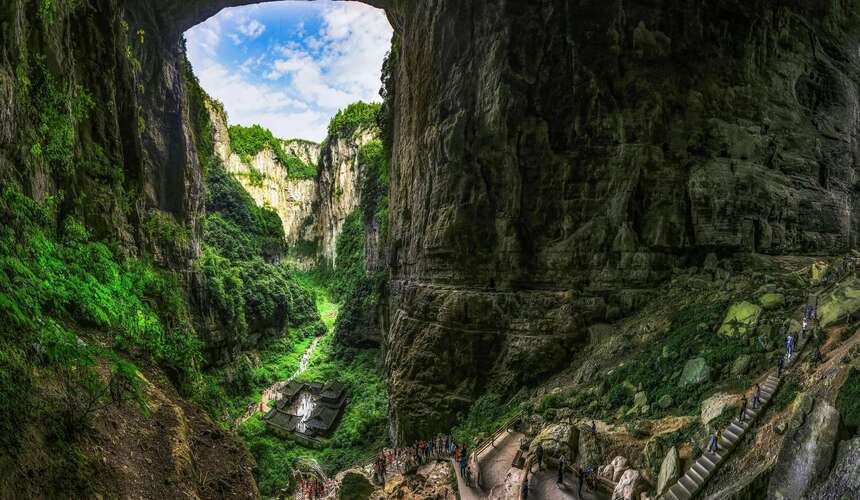
8. Hanging Temple (Datong City, Shanxi Province)
Perched precariously on a cliff face over 75 meters above the ground,. The Hanging Temple is an architectural marvel that has stood for over 1,500 years. Unlike any other temple in China, it combines elements of Buddhism, Taoism, and Confucianism. All suspended on wooden stilts. This unique structure remains one of the most intriguing off the beaten path China attractions, far from the typical tourist trail.
- Best Time to Visit: Spring (April–June) and Autumn (September–October) for mild weather and clear skies. Avoid winter due to icy cliffs and summer due to high heat.
- Famous For: Its precarious position built into a cliffside. Architectural blend of three religions.
- Travel Tips: Wear comfortable and sturdy shoes for climbing steep staircases and narrow walkways. Combine with a trip to nearby Yungang Grottoes, another UNESCO site in Datong.
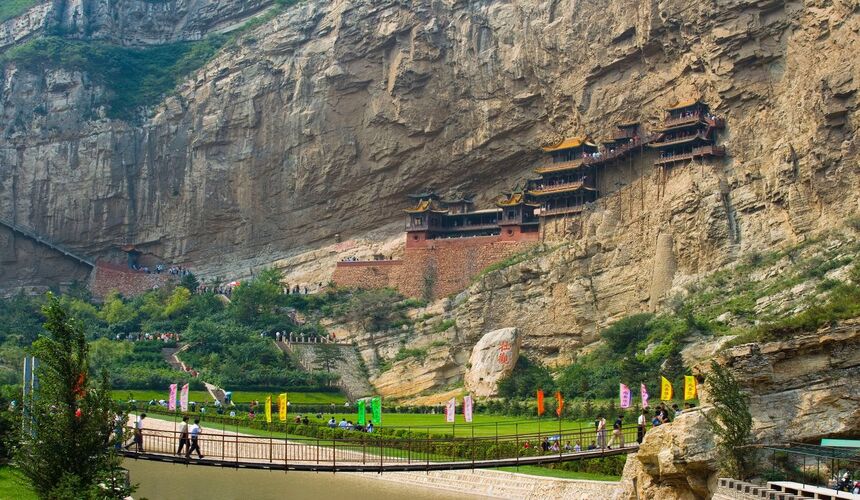
9. Mount Fanjing (Guizhou Province)
Mount Fanjing is a mystical peak rising sharply from the Wuling Mountain range and is a UNESCO World Heritage site. Known for its unique “Mushroom Rock” formations, sacred Buddhist temples, and rich biodiversity. Fanjing is a serene escape for nature lovers and spiritual seekers. It’s a top pick among unexplored destinations in China with stunning alpine scenery and peaceful hiking trails.
- Best Time to Visit: Spring (April–June) and Autumn (September–November) offer pleasant weather and colorful foliage.
- Famous For: The iconic Fanjingshan Mushroom Rock. Ancient Buddhist temples perched on cliffs. Diverse flora and fauna.
- Travel Tips: Prepare for strenuous hiking; some trails are steep but rewarding. Take the cable car to save energy for temple visits and viewpoints. Pack warm clothing because temperatures can drop quickly at high altitude.
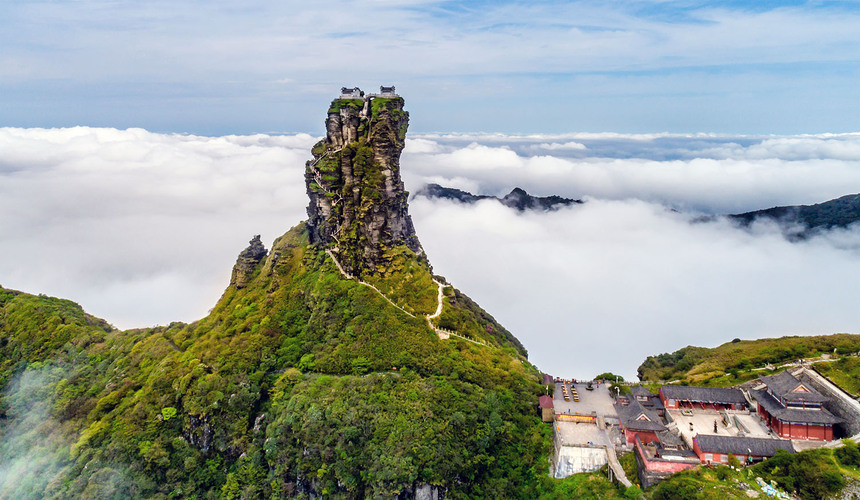
10. Detian Waterfall (Chongzuo City, Guangxi Province)
Straddling the border between China and Vietnam, Detian Waterfall is one of Asia’s largest transnational waterfalls. Surrounded by lush karst mountains and vibrant forests. It’s a breathtaking sight that remains off the radar for many international tourists, making it a true secret travel spot in China.
- Best Time to Visit: May to October during the rainy season for the fullest, most dramatic waterfalls. Dry season offers easier hiking but less water flow.
- Famous For: The impressive multi-tiered waterfall cascading over limestone cliffs. Cross-border views between China and Vietnam. Scenic boat rides and hiking trails around the falls.
- Travel Tips: Wear waterproof shoes or sandals, as trails can be slippery. Combine your visit with a trip to the nearby Mingshi Scenic Area. Be prepared for some hiking and stairs to access the best viewpoints.
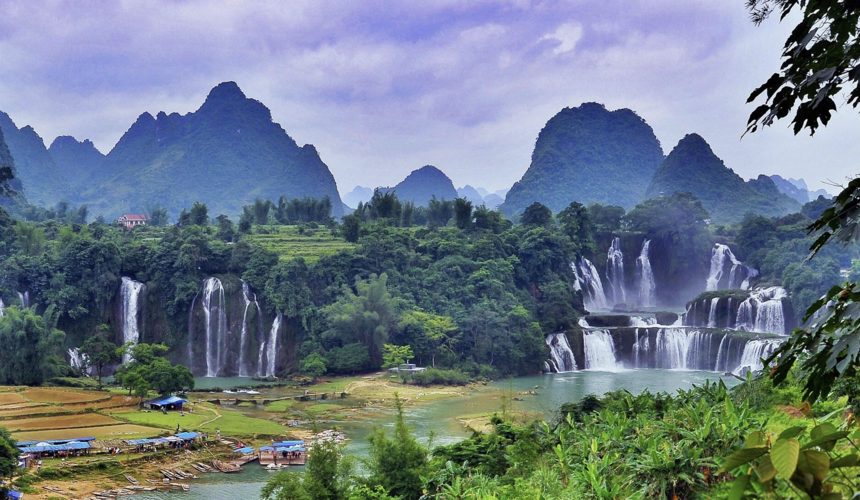
11. Tulou Clusters (Fujian Province)
The Tulou are massive, circular or square earthen buildings constructed by the Hakka people as communal living fortresses. These UNESCO World Heritage sites are architectural wonders with centuries of history and are scattered throughout rural Fujian. Despite their fame, many Tulou villages remain peaceful and offer an authentic glimpse into hidden places in China and rural life.
- Best Time to Visit: Spring (March–May) and Autumn (September–November) for pleasant weather and festivals. Avoid the rainy season (June–August).
- Famous For: Unique earthen architecture designed for defense and community living. Rich Hakka culture and traditions.
- Travel Tips: Hire a local guide to understand the history and significance of each Tulou. Stay overnight in a renovated Tulou guesthouse for a unique experience. Bring cash because some remote areas may have limited payment options.
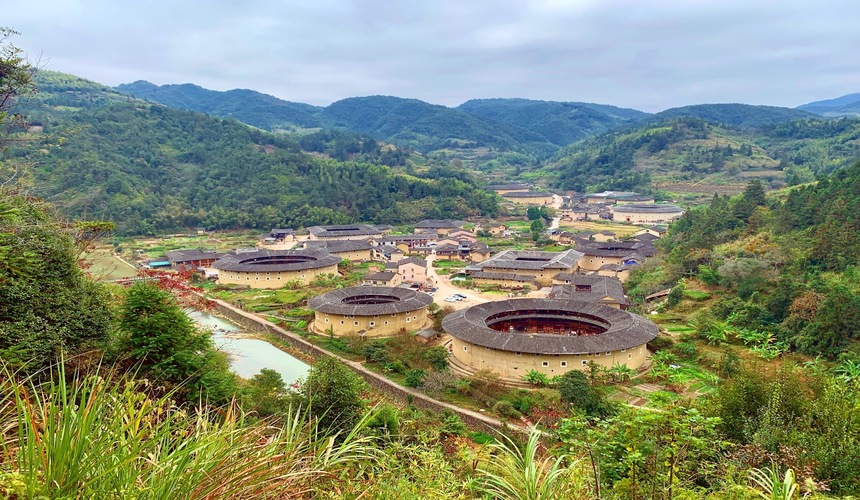
12. Badain Jaran Desert (Inner Mongolia)
The Badain Jaran Desert is one of the largest and most mysterious deserts in China. Famous for its towering sand dunes, some reaching over 500 meters high. Scattered across this vast sandy sea are hidden spring-fed lakes, creating a surreal oasis landscape rarely seen by tourists. This is a true off-the-beaten-path China adventure for desert explorers and photographers.
- Best Time to Visit: May to September for milder temperatures and clearer skies. Avoid winter because extreme cold and snow are common.
- Famous For: Massive singing sand dunes. Unique desert lakes and springs amid the dunes. Camel treks and stargazing opportunities.
- Travel Tips: Join a guided tour with experienced desert drivers or camel herders. Cell service is limited; prepare accordingly.
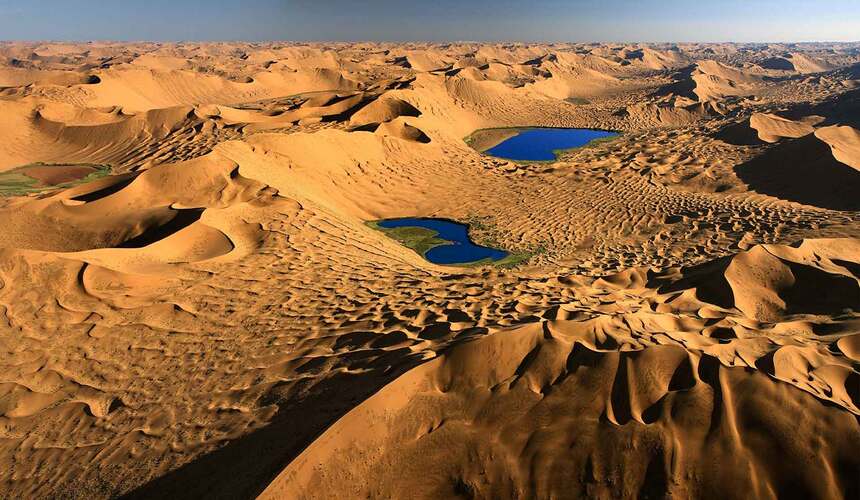
13. Kaiping Diaolou (Guangdong Province)
The Kaiping Diaolou are distinctive multi-story fortified towers built by returning Chinese emigrants during the early 20th century. Combining Western and Chinese architectural styles, these UNESCO-listed towers served as protection against bandits and flooding. Although increasingly popular, many of the villages remain peaceful, offering a glimpse into an extraordinary chapter of alternative China travel.
- Best Time to Visit: October to March for cooler and drier weather.
- Famous For: Unique fusion of Chinese and Western architectural styles. Scenic rural landscapes dotted with diaolou towers.
- Travel Tips: Rent a bike or scooter to explore multiple diaolou villages at your own pace. Stay overnight in a local guesthouse for an immersive experience.
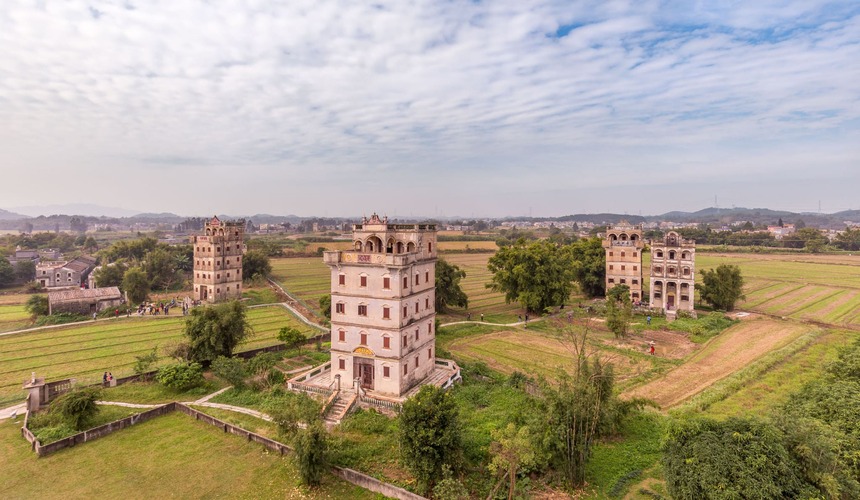
14. Dongchuan Red Land (Yunnan Province)
Dongchuan Red Land is a spectacular patchwork of bright red soil, rolling hills, and patchwork farms in Yunnan. The striking contrast of crimson earth, green crops, and blue skies creates some of China’s most vibrant and lesser-known landscapes. It’s a must-see for photographers and those craving an unexplored destination in China.
- Best Time to Visit: September to November, when the soil’s color is most vivid and crops are harvested.
- Famous For: Vibrant red soil landscapes. Terraced fields and rural farming scenes.
- Travel Tips: Rent a car or hire a local driver. Stay in nearby Luoxi Village for easy access and accommodation.
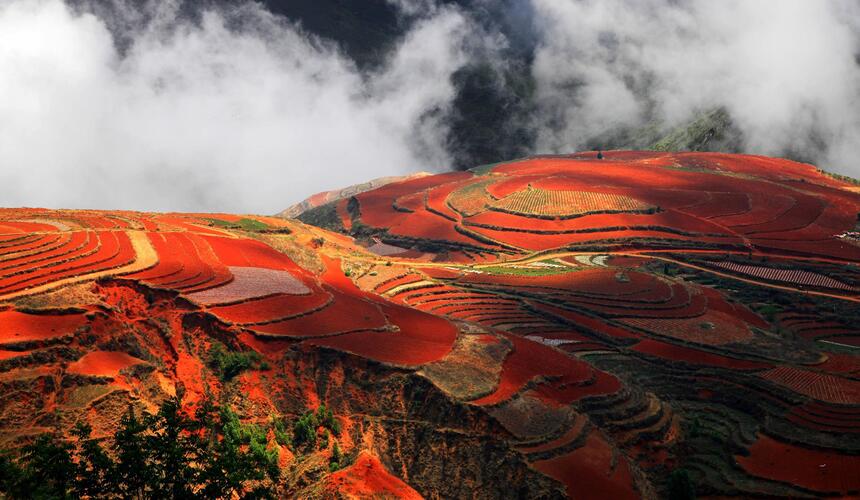
15. Hemu Village (Xinjiang Uygur Autonomous Region)
Nestled in the Altay Mountains, Hemu Village is a charming wooden hamlet inhabited by Kazakh herders. This idyllic village is a slice of traditional nomadic life surrounded by lush meadows. You can enjoy the breathtaking peaks of Xinjiang’s far north. Hemu is a perfect spot for travelers wanting to explore secret travel spots in China that feel a world away from city life.
- Best Time to Visit: Summer (June to August) for vibrant green landscapes and mild weather. Early autumn for golden meadows and harvest festivals.
- Famous For: Traditional wooden cabins and yurts. Rich Kazakh culture and horseback riding.
- Travel Tips: Accommodations are limited; it is suggested to book in advance during peak season. Bring insect repellent for summer visits. Respect local customs and ask permission before photographing residents.
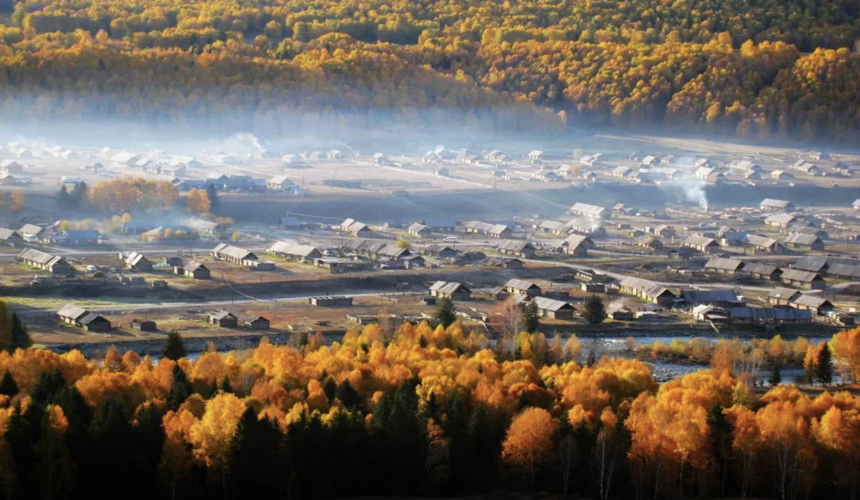
China is far more than its iconic landmarks and bustling megacities. From ancient cliffside temples and desert oases to colorful farmland and mountain villages untouched by time. These off-the-beaten-path destinations in China offer a deeper experience. Ready to create a travel story that’s uniquely yours? Talk to one of our expert China travel consultants to start planning your customized adventure into the lesser-known corners of this vast and diverse country. Or just chat with our travel consultant directly from WhatsApp: +86 187 2197 8867. Let China surprise you, one secret spot at a time.


